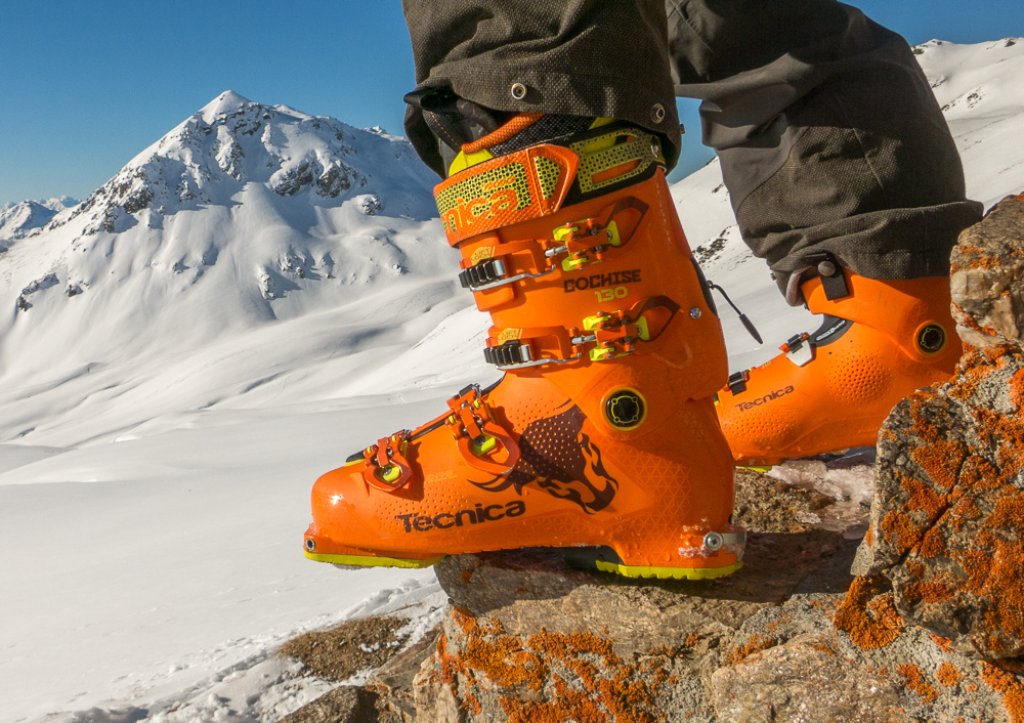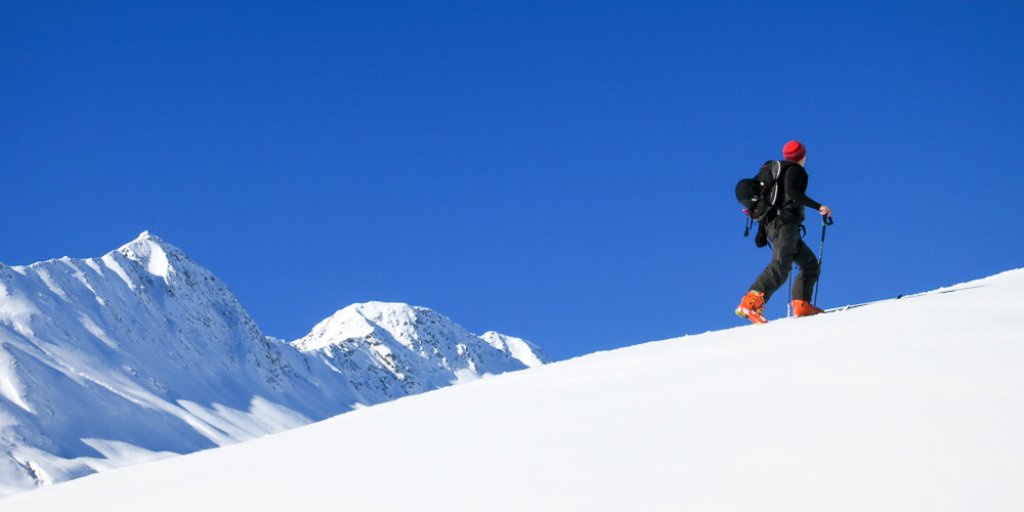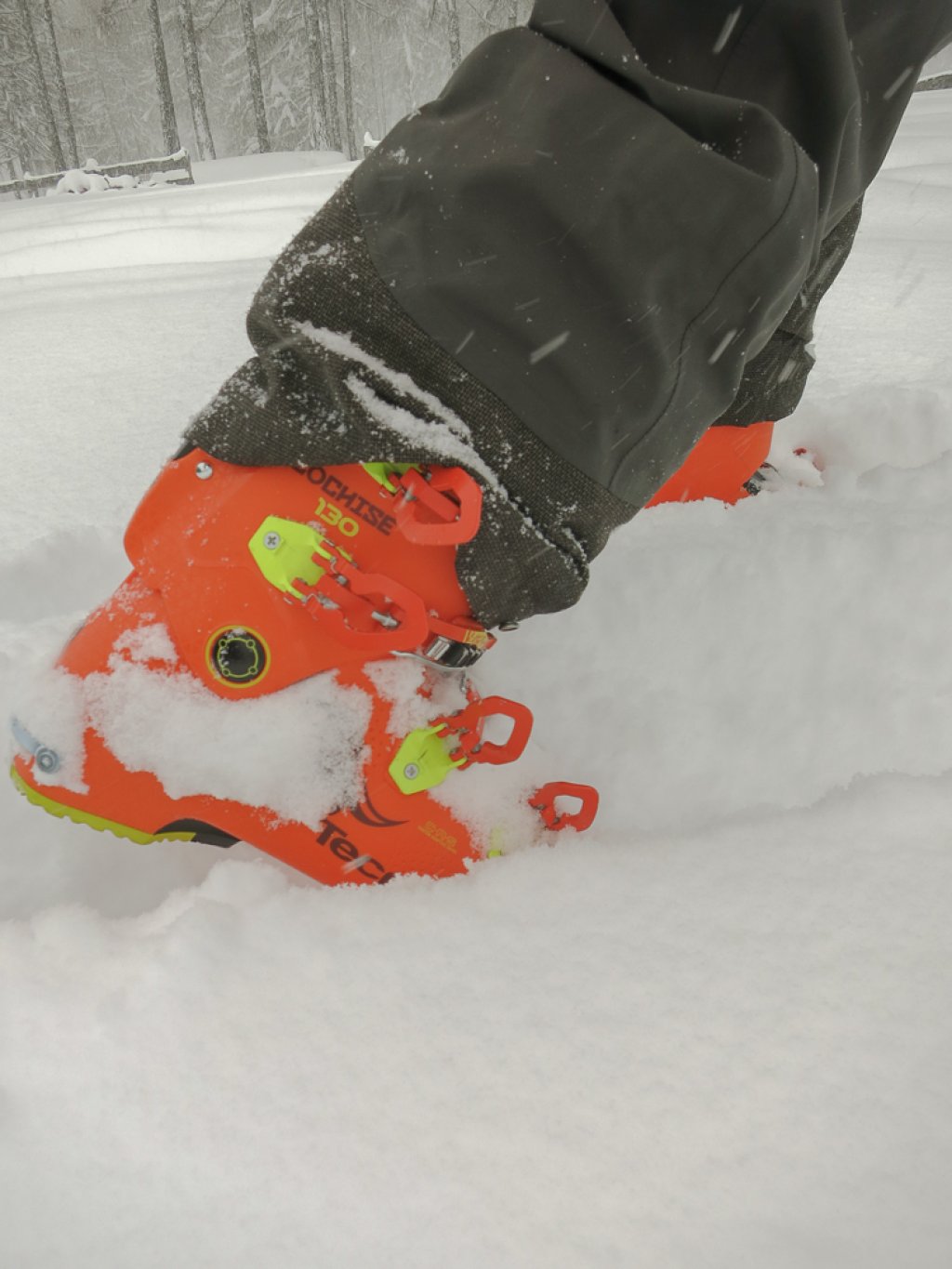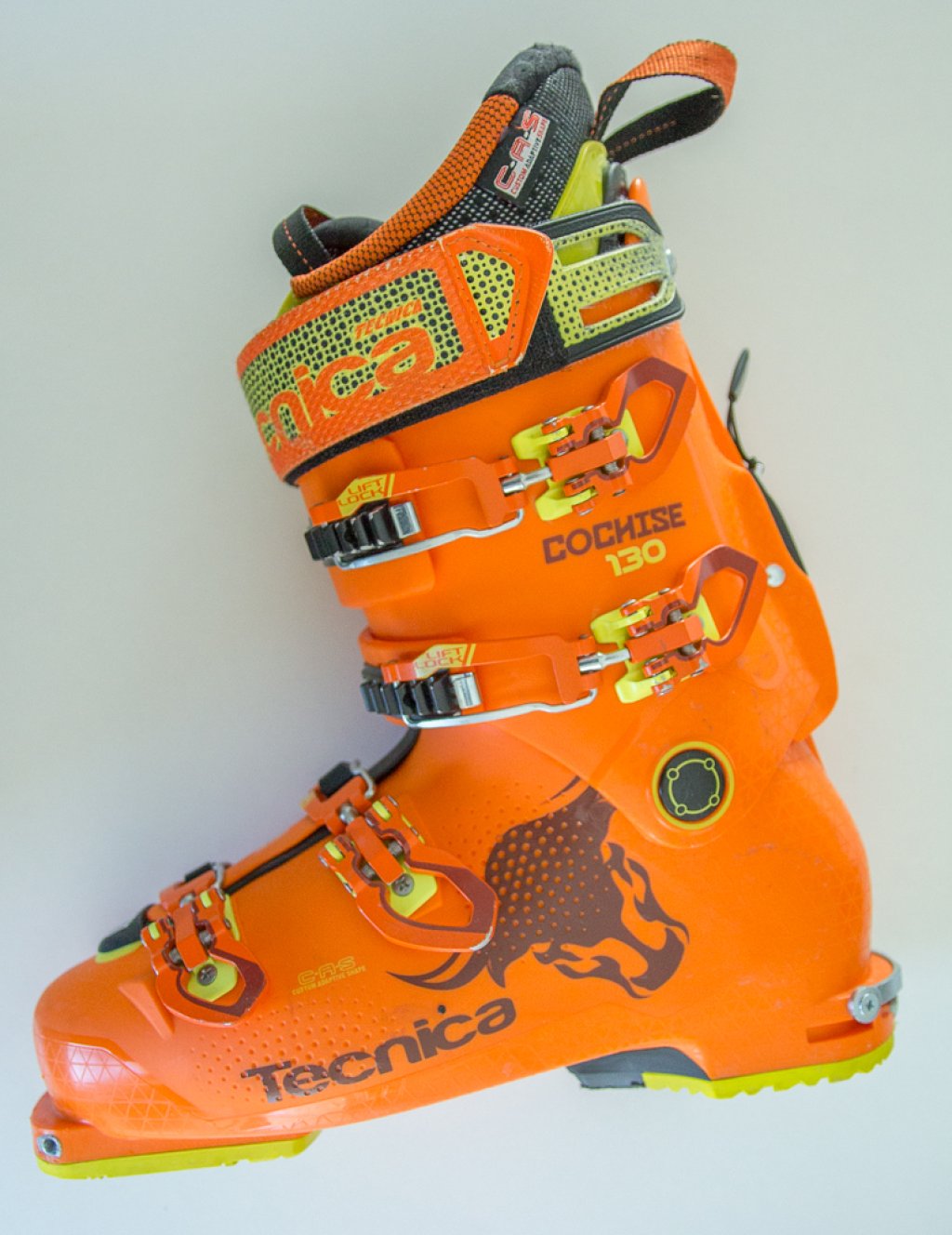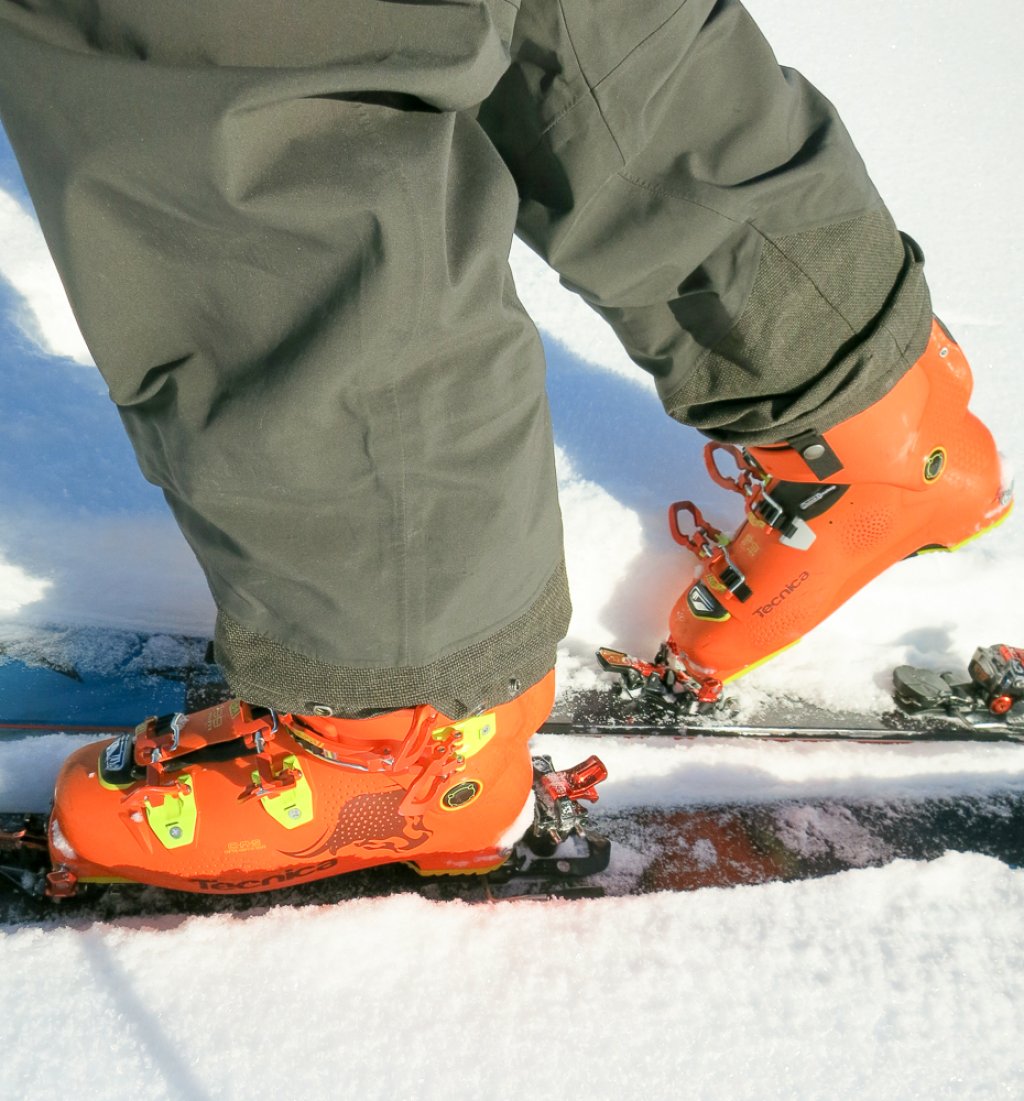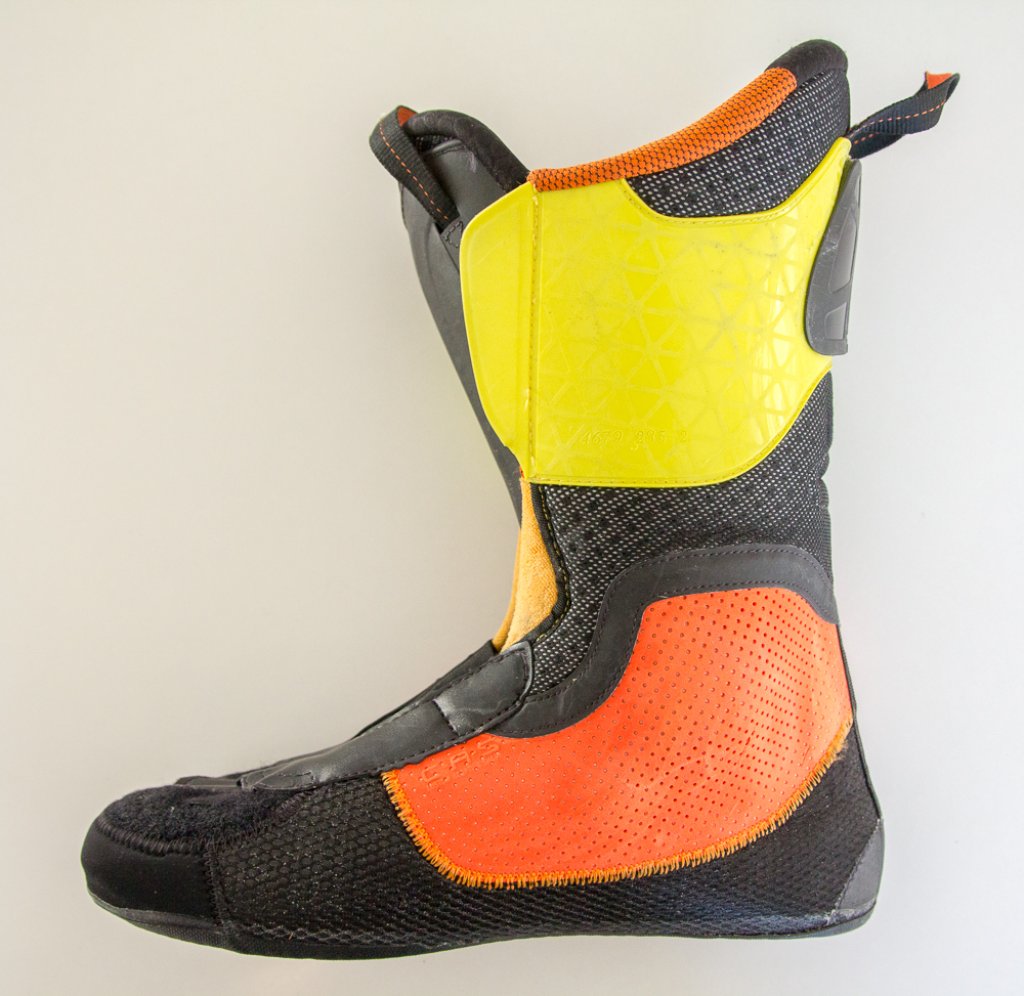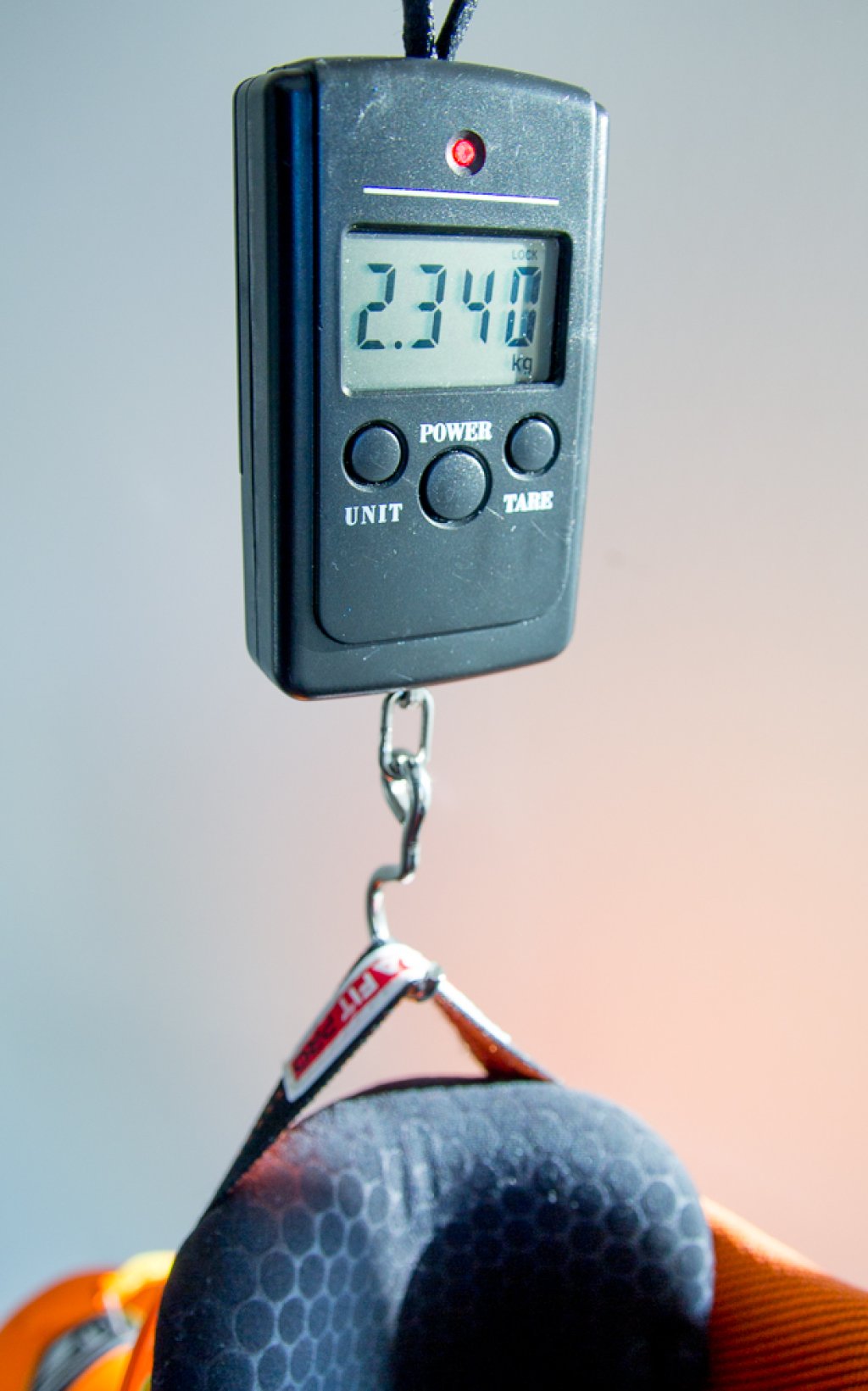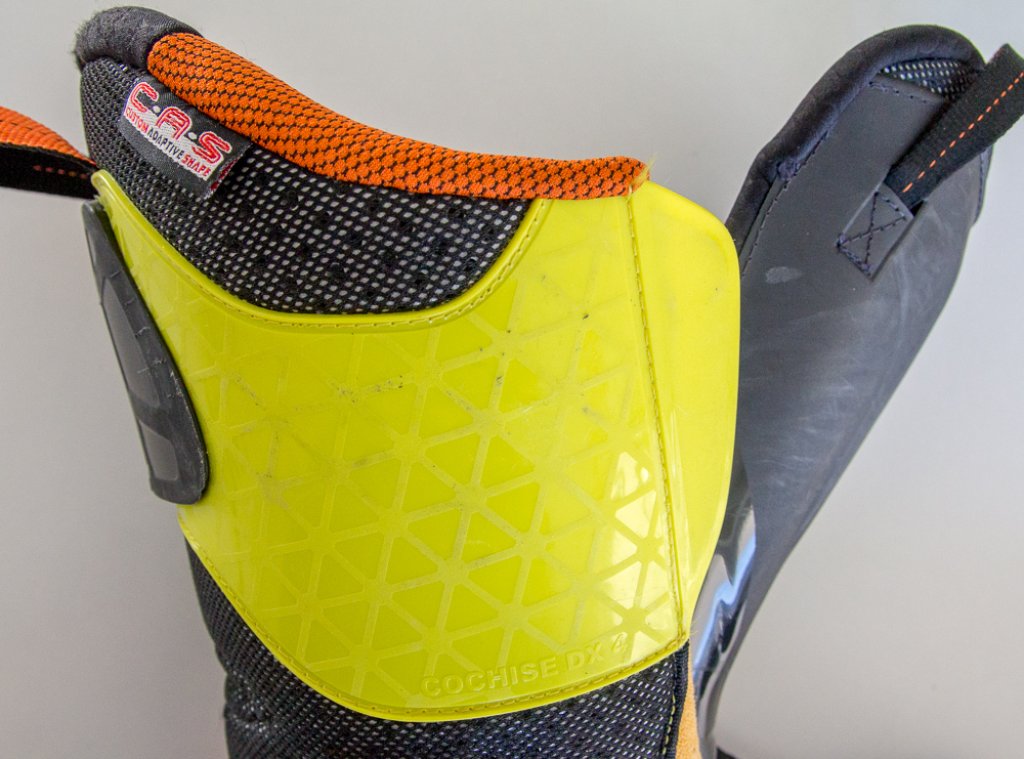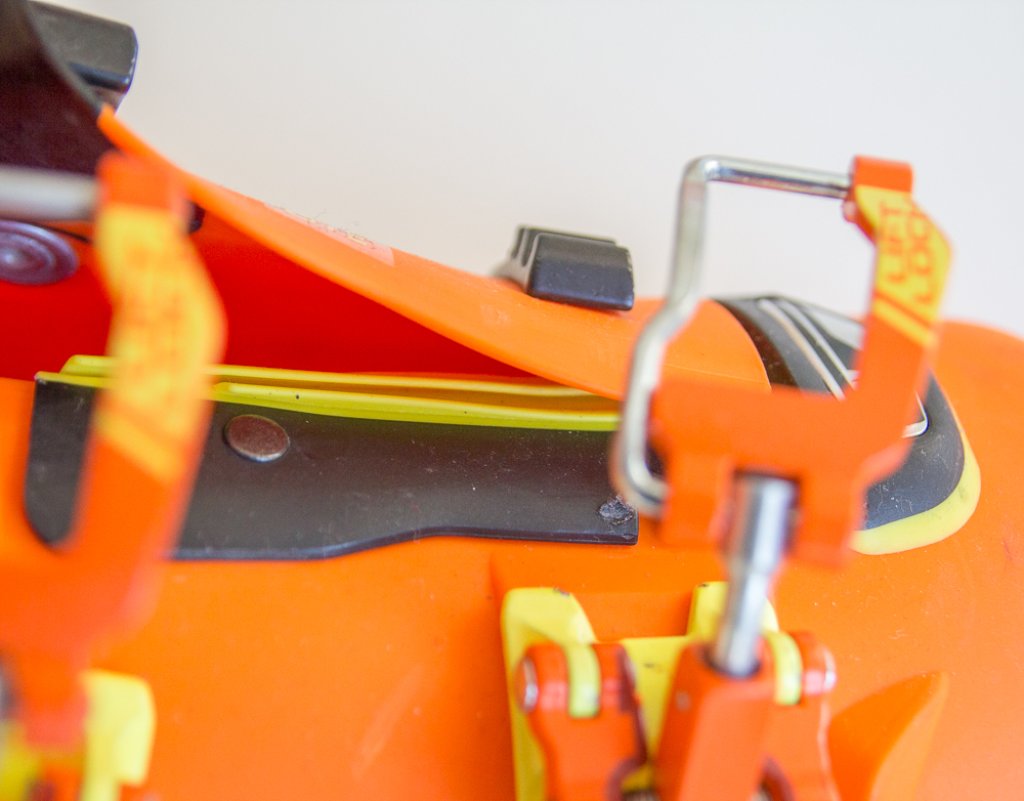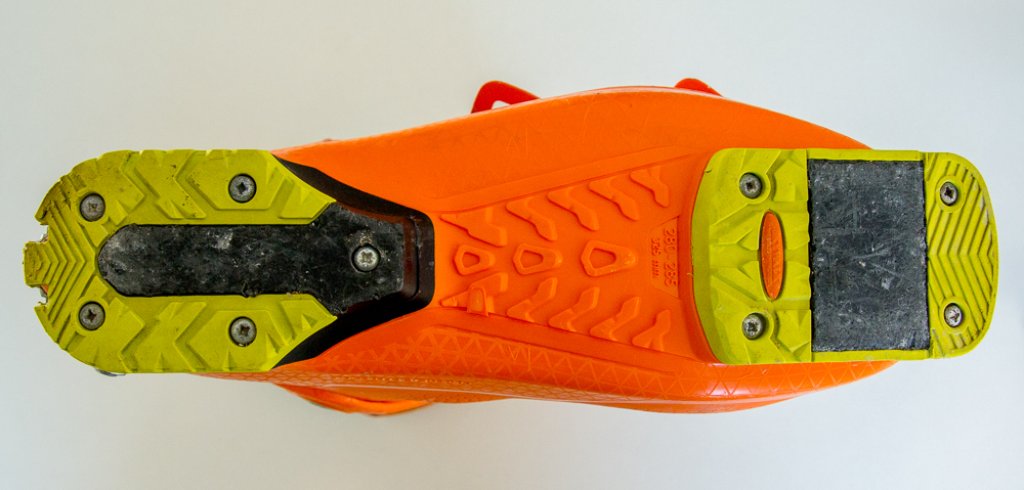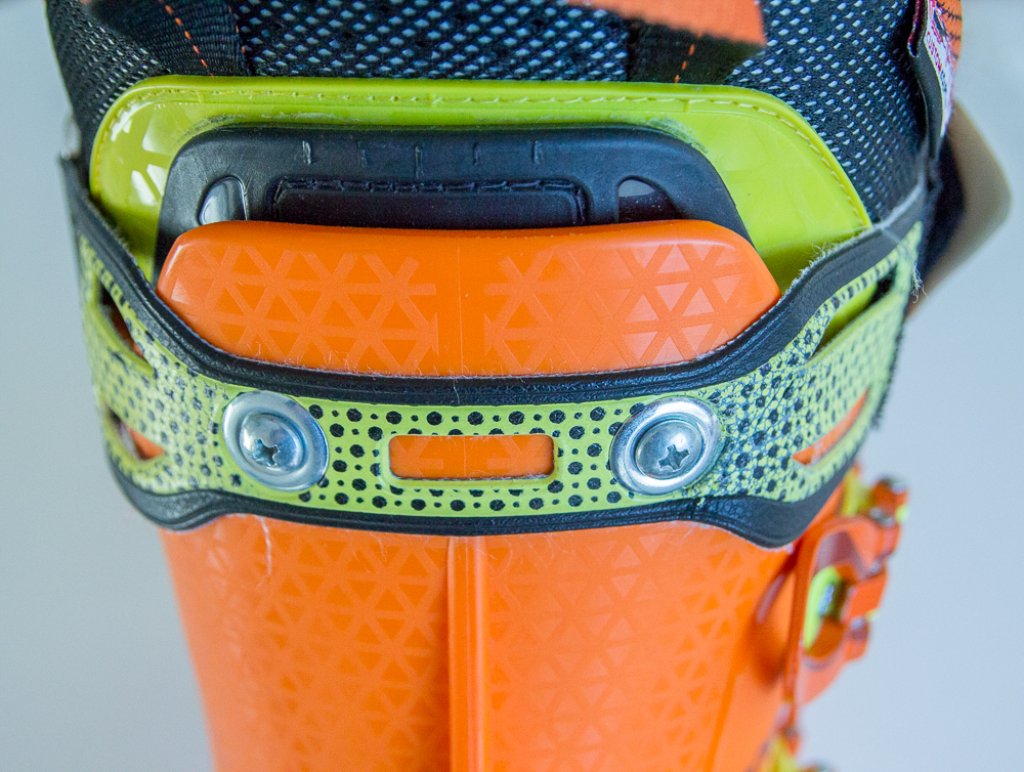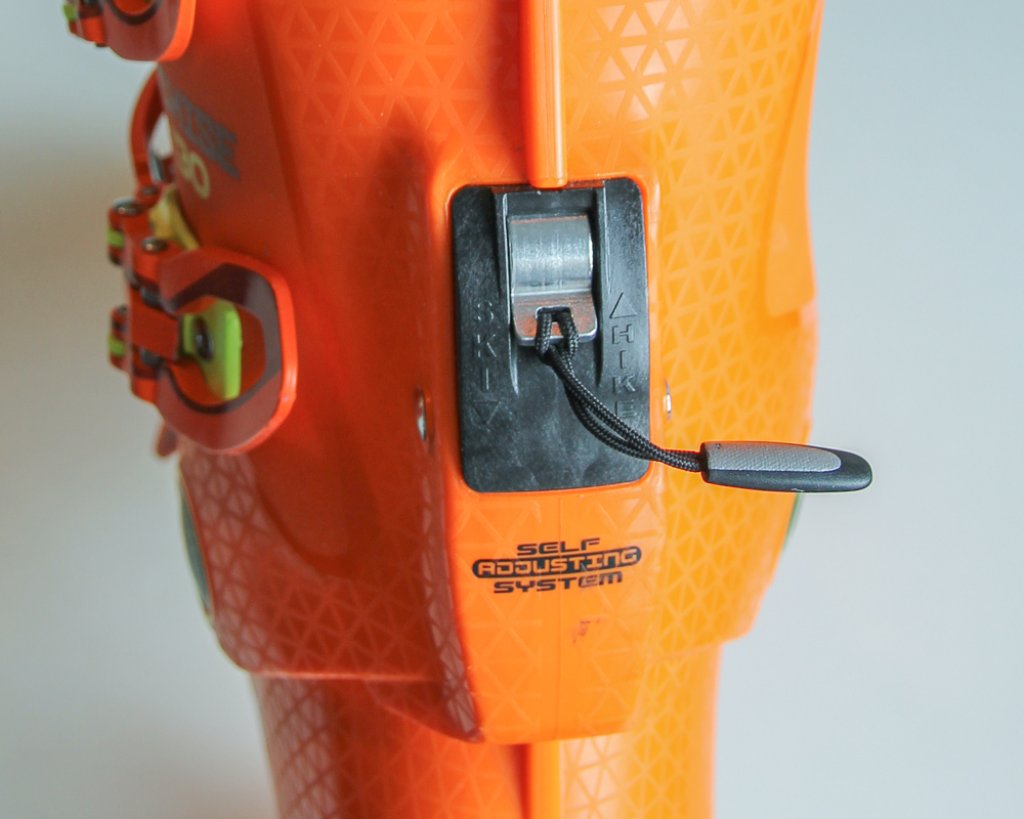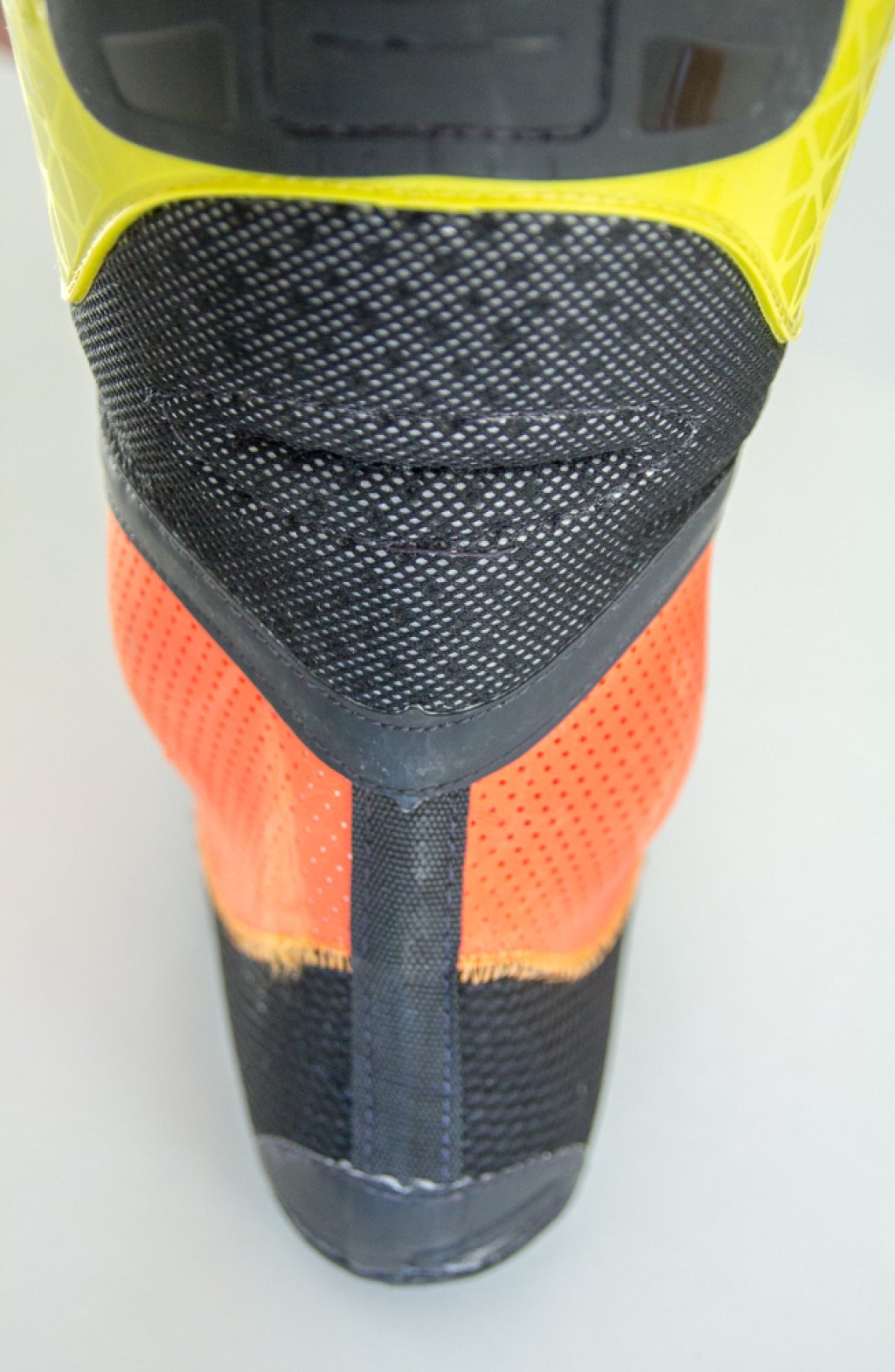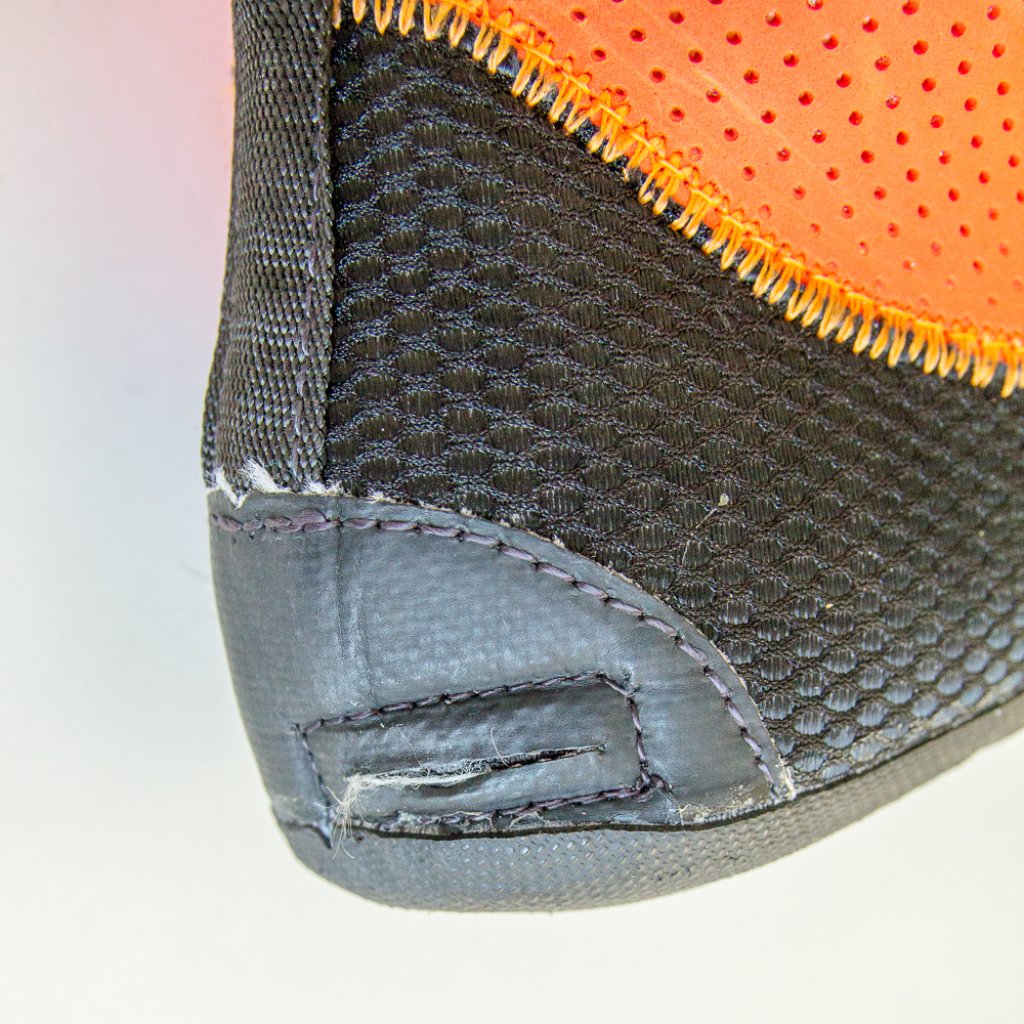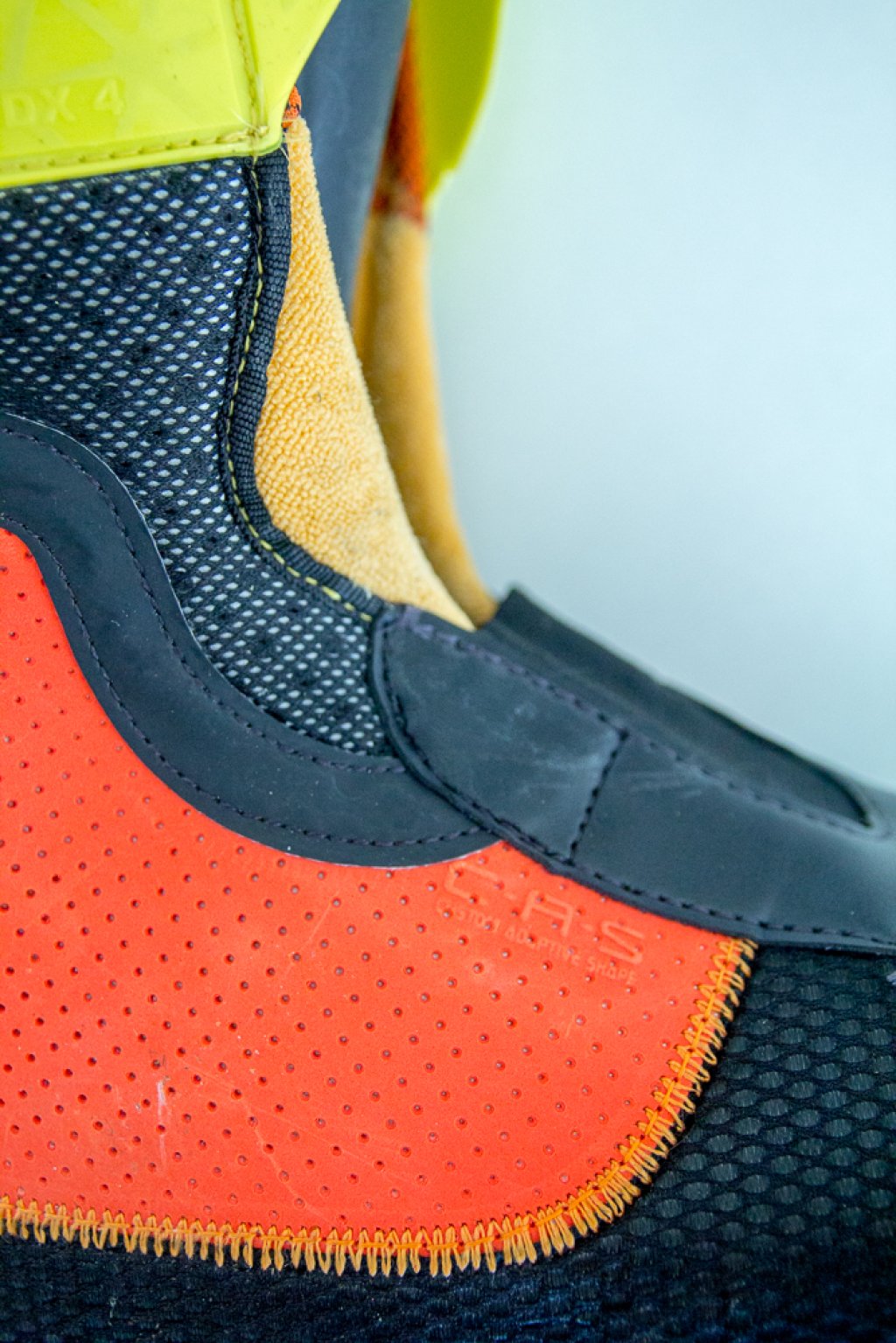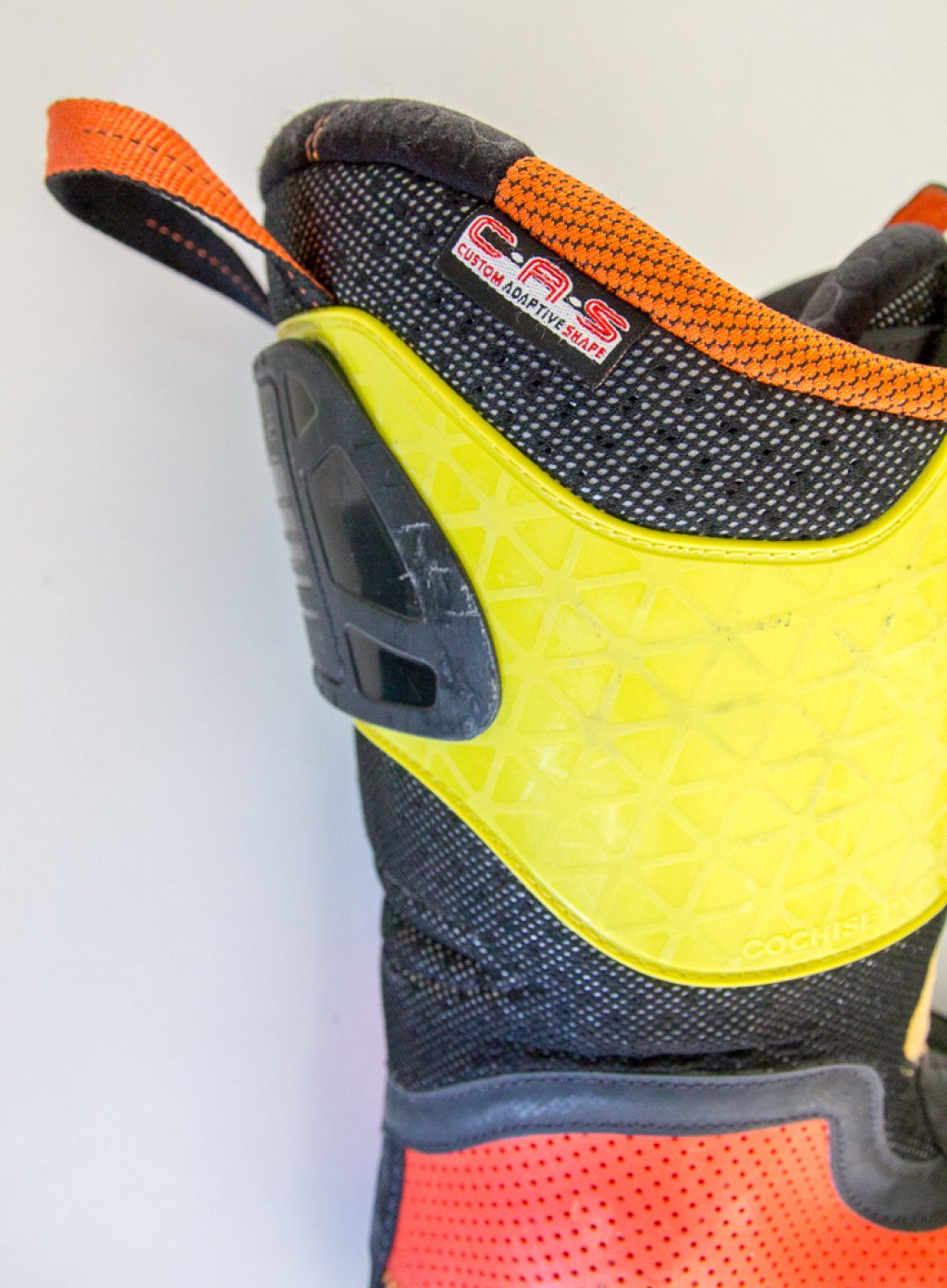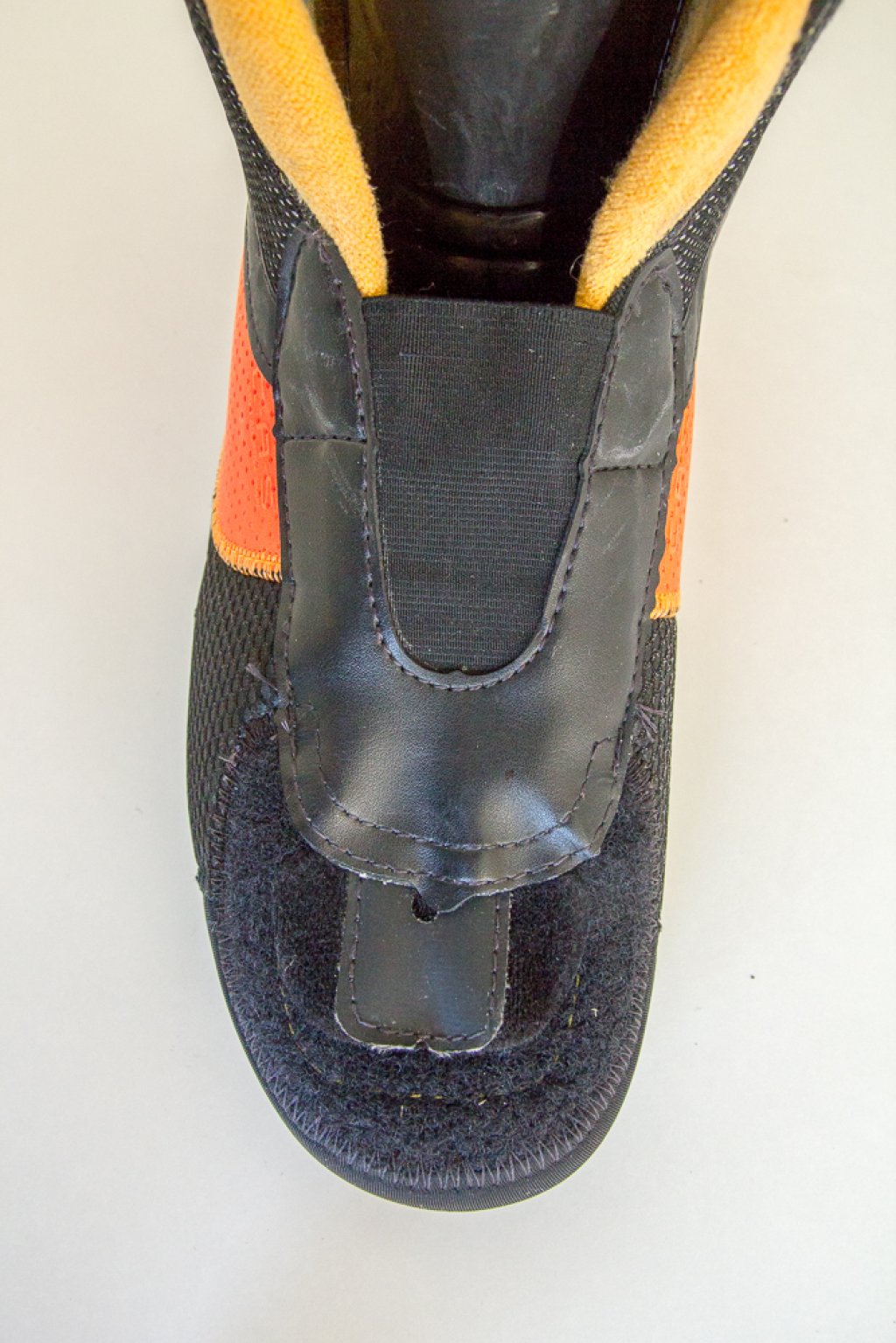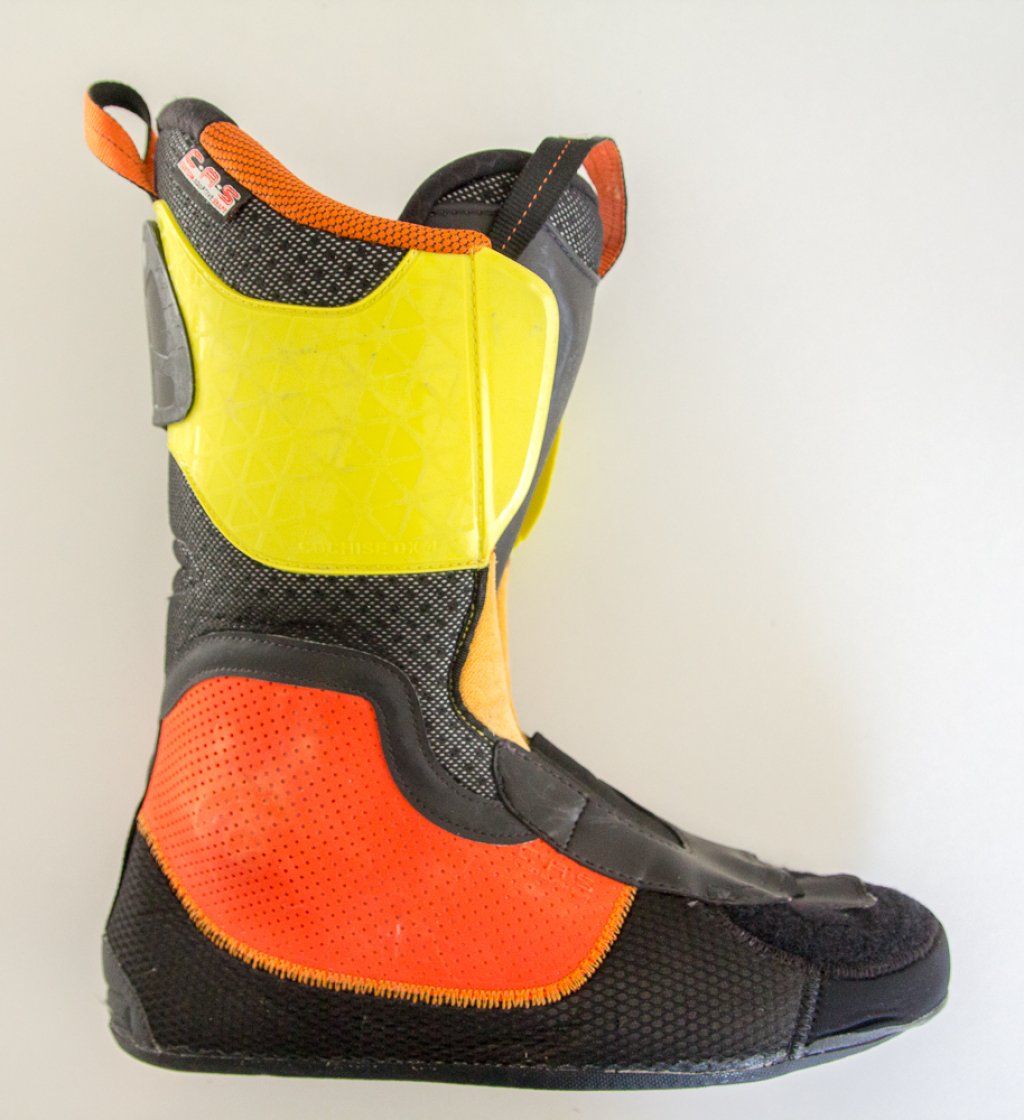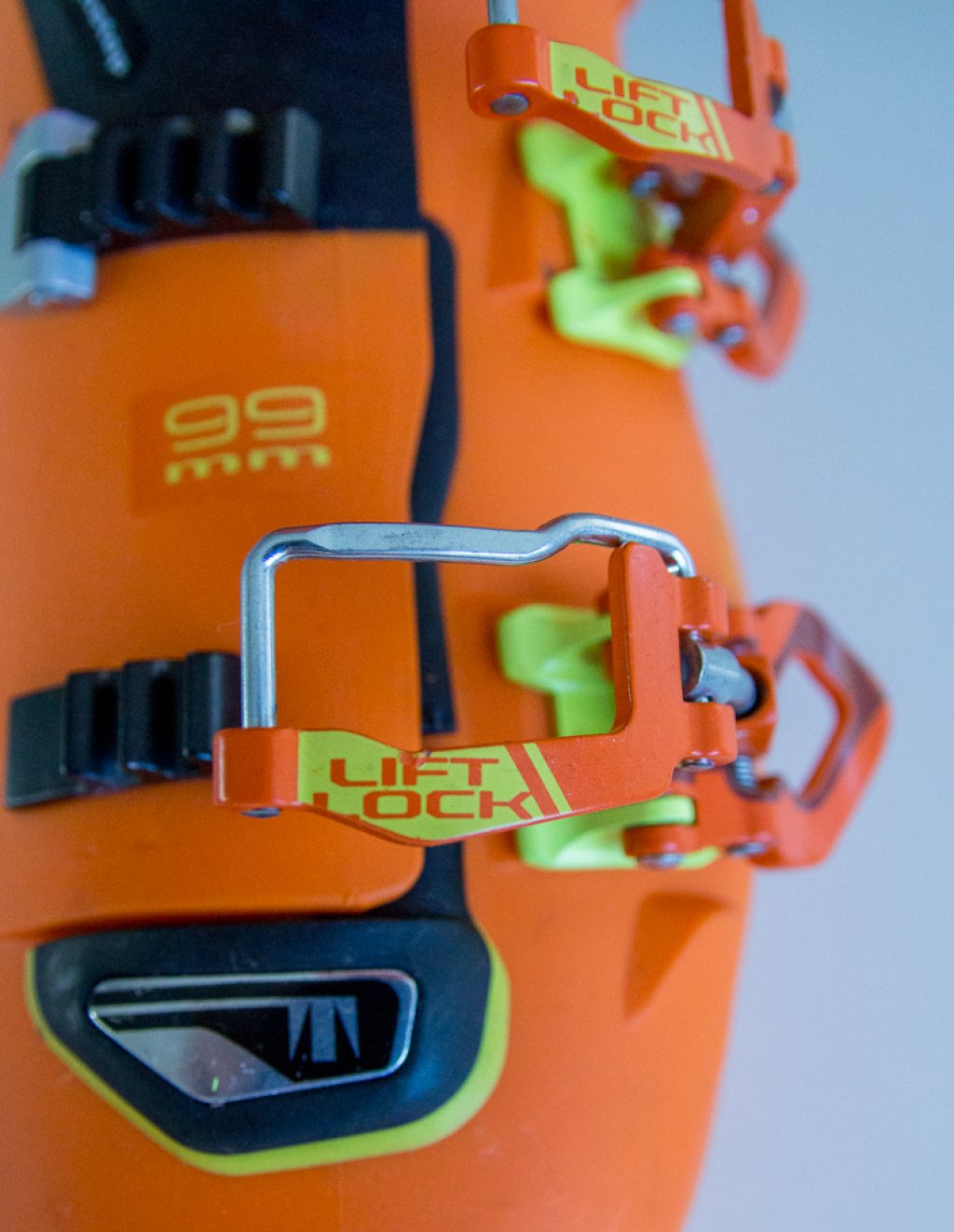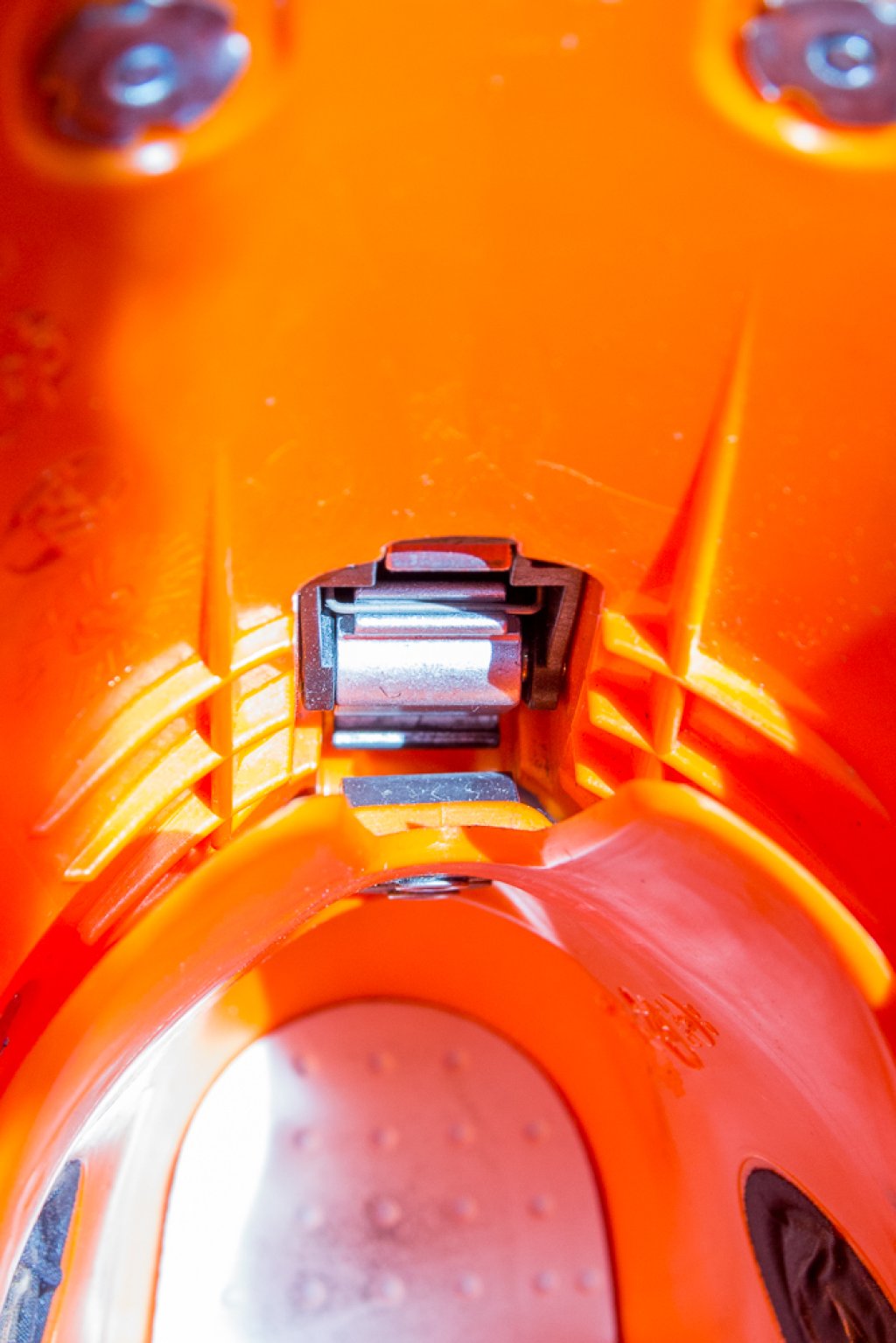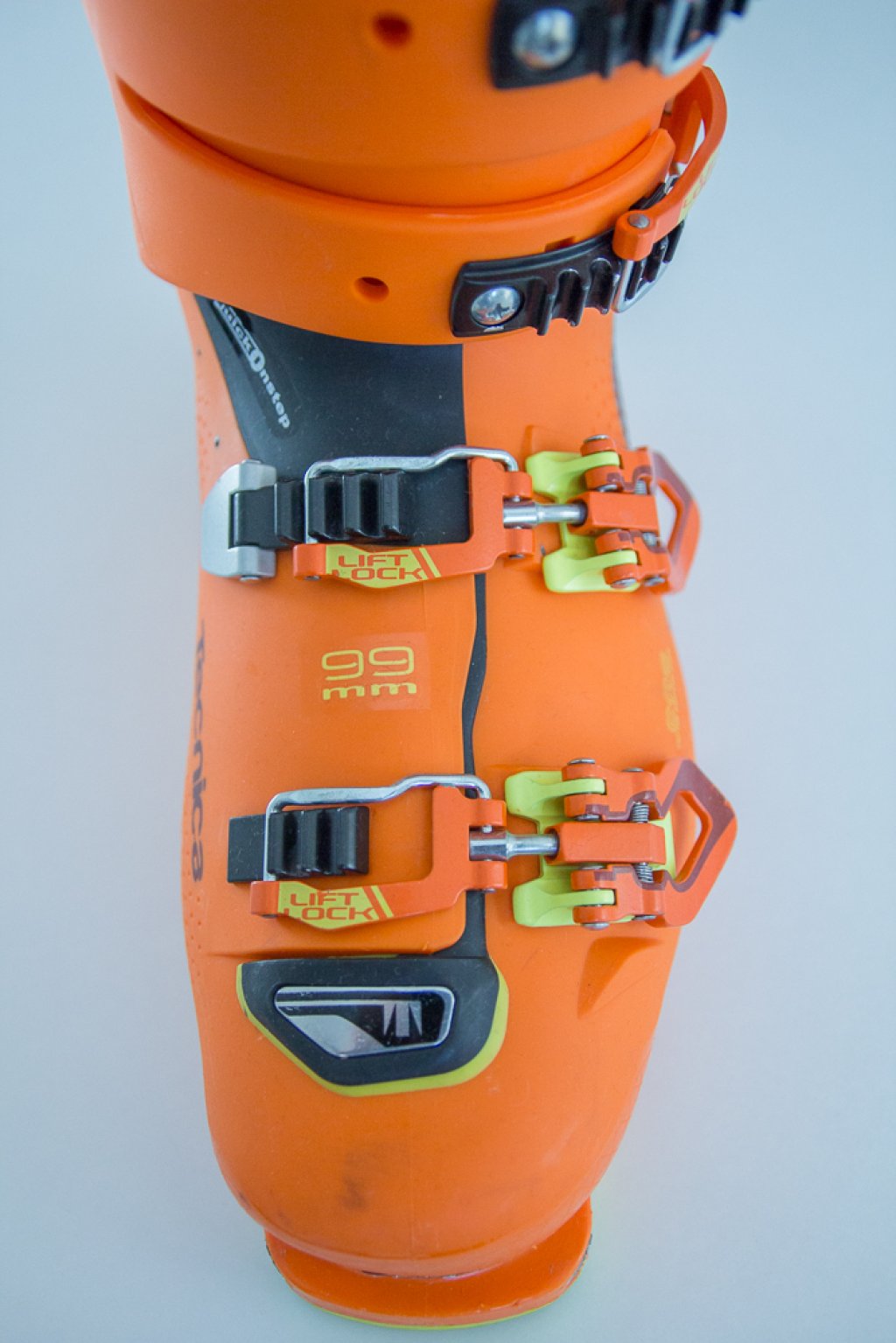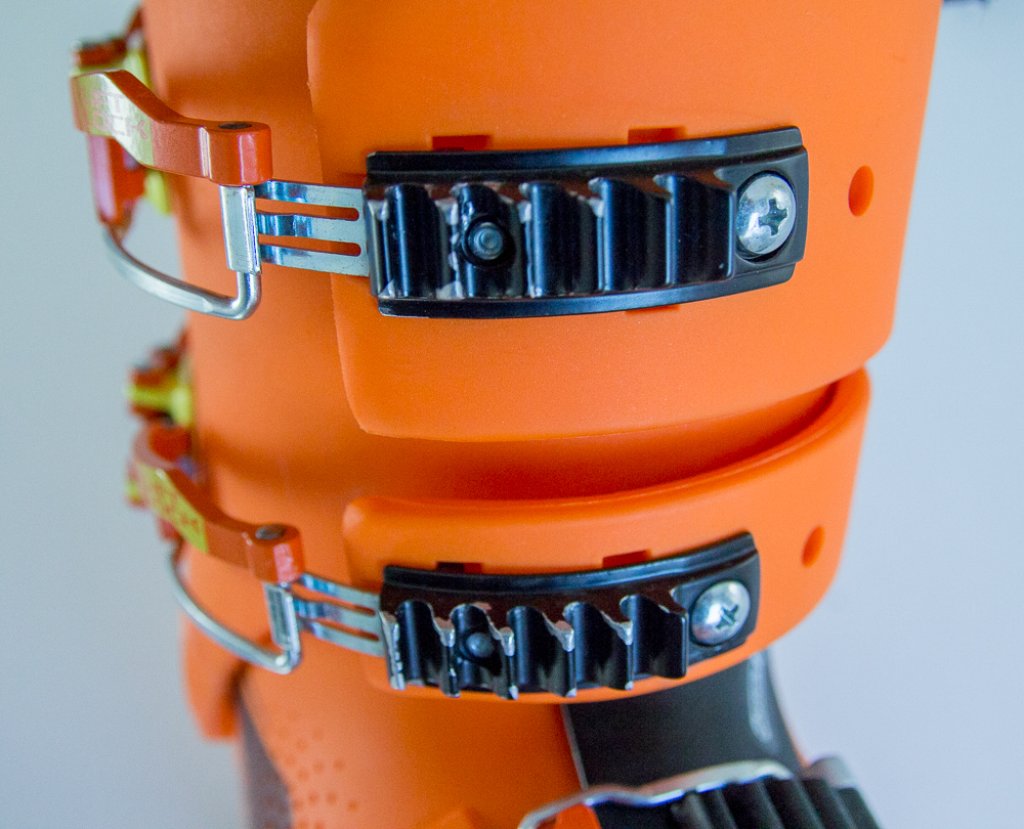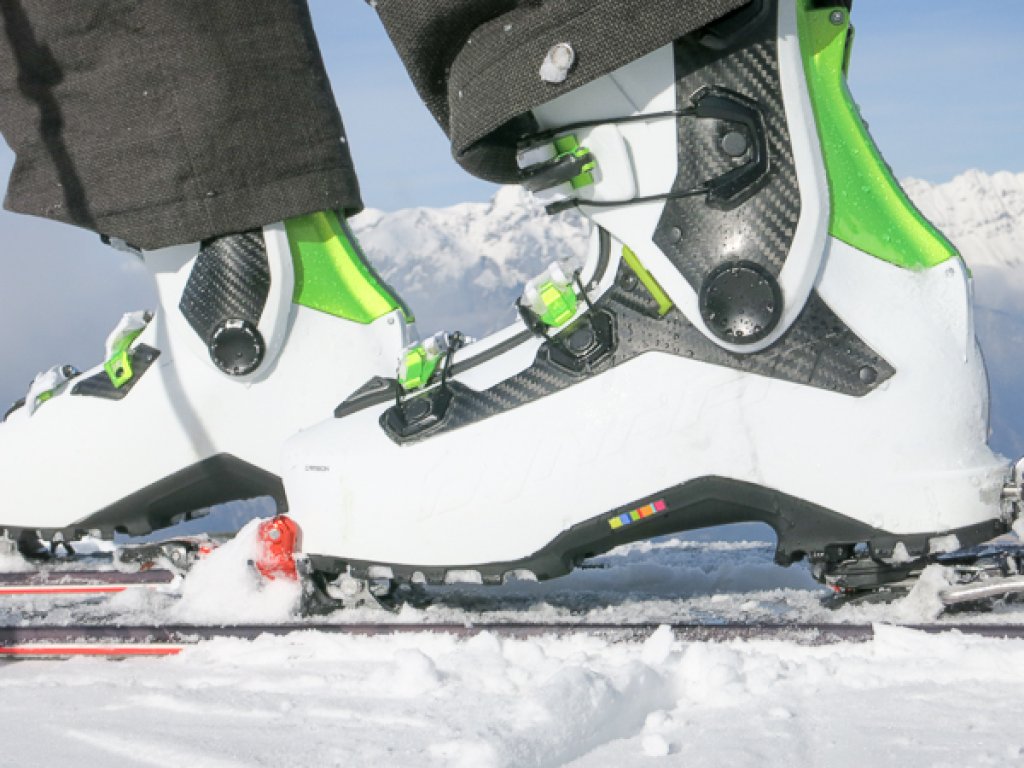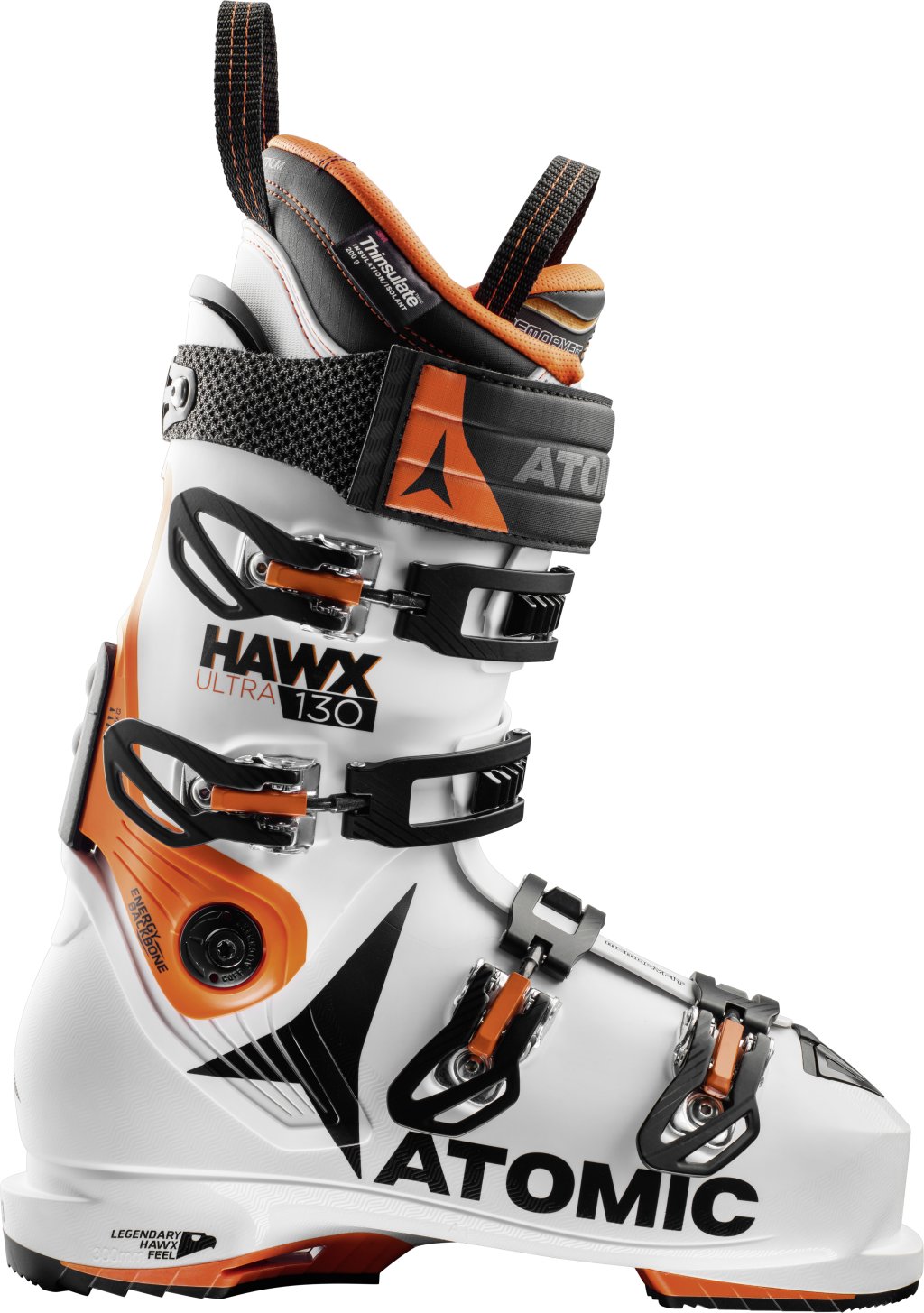Testers and test conditions
The boot was tested for around 20 days in the 16/17 season by an 82 kg, 182 cm tall man with a sporty skiing style. Thanks to the tech inserts and alpine sole (without the hassle of changing), it was used on a wide variety of skis with different bindings (from giant slalom skis to park and freeride skis to a powder board with Dynafit Beast 14). We skied on (icy) pistes, (unfortunately rarely) powder and various surfaces in between. Due to the time of year and temperatures, the boot was not used in slushy snow.
First impression
When you hold the bright orange boot in your hands for the first time, it's easy to recognize the character of an alpine racing boot. The narrow design, four buckles and power strap give you an idea that the Cochise's strength lies in downhill skiing. The materials and workmanship look solid. The boot is robust overall. Although the weight is not as surprising as that of full carbon touring boots, it also feels lighter than comparable models. Compared to the previous models, the tech inserts built into the shell catch the eye. With the bright yellow strap, it's more a case of chunking than spilling. The buckle and liner are noticeably adapted to the anatomy of the foot in many areas, such as the heel.
The Tecnica Zero G Guide Pro model, which was also released this season and reviewed here, differs at first glance with its significantly more purist liner and lower weight. You can find out whether the Cochise justifies the difference in weight in terms of downhill performance and how this affects the ascent in the practical section below.
Shell
The two-piece "C.A.S" shell made of lightweight "bi-material polyether" is anatomically shaped like the liner and fits perfectly with it. The shoe itself is narrow to medium with a last of 99 mm. Unfortunately, as with other Technica models, there are no wider or more voluminous versions available for riders with large (wide) feet. The four aluminum buckles screwed to the shell (= easy replacement) can be adjusted in length using the "Micro" system by simply turning them. If this is no longer sufficient, there is also a second drill hole in which the buckle can be moved. According to the manufacturer, the "Power Light Design"frame, which can be recognized by the surface structure in the rear and lower area of the shell, is 2.5 times stiffer and at the same time 30% thinner than previously installed frames, which saves weight. According to Tecnica, this is one of the reasons why the Cochise 130 is the lightest four-buckle polyether ski boot ever built. In the area where the shell overlaps in the lower part of the boot, a double slat is incorporated to prevent moisture from penetrating.
The walk function can only be recognized on the outside by a small switch (with a strap for easier operation with gloves). In the walk position, the switch releases a solid metal hook on the inside, which hooks into another metal part in the ski position. Thanks to the "S.A.S. (Self Adjusting System)", the walk function adjusts itself so that there is no play. The 45 mm wide strap is firmly attached to the shell via two screws on the back. This has the advantage that you can easily fit your own power strap if necessary.
Exchangeable soles with touring tread are available for the Cochise 130 Pro at an RRP of €49.9. As the inserts in the new model are already built into the shell, they "only" have the advantage of better grip on hikes or climbing passages with the skis on the back. On the other hand, the disadvantage with mounted touring soles is that the sliding surfaces built into the alpine soles are no longer available for correct function in alpine bindings.
